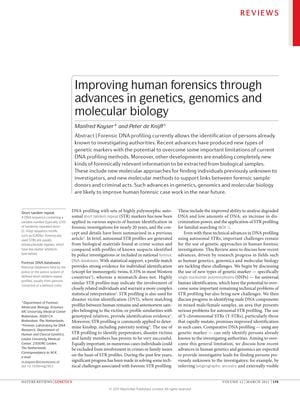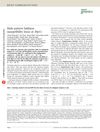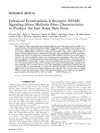Improving Human Forensics Through Advances in Genetics, Genomics, and Molecular Biology
February 2011
in “
Nature Reviews Genetics
”

TLDR DNA profiling in forensics has improved, but predicting physical traits and ancestry from DNA has limitations and requires ethical consideration.
The document from 2011 reviews the use of DNA profiling in forensic investigations, focusing on the use of autosomal short tandem repeat (STR) markers and the potential of single nucleotide polymorphisms (SNPs) to improve forensic analysis. It discusses the challenges of analyzing mixed samples and the limitations of current Y-chromosome STRs (Y-STRs) in distinguishing closely related males, suggesting that rapidly mutating Y-STRs could provide better differentiation. The paper also explores forensic DNA phenotyping (FDP) for predicting physical appearance and biogeographic ancestry, acknowledging the ethical considerations and legislative support needed for FDP. Additionally, it highlights the limitations of DNA-based predictions of externally visible characteristics (EVCs) due to environmental influences and the complexity of human traits. The document concludes that while DNA-based inference of biogeographic ancestry can be useful, its application is currently limited to detecting large geographic regions such as continents.

